Cinema Museum of Iran in Ferdows Garden, Tehran
Are you a passionate cinema lover seeking to delve into the rich history of Iranian filmmaking?
Tucked away in Ferdows Garden within a magical Qajar-era mansion, the Cinema Museum of Iran allows you to explore cinema from a different angle, one that showcases the evolution of Iranian filmmaking, from its early silent era to the groundbreaking Iranian New Wave movement.
The Cinema Museum of Iran showcases many exhibits, including photographs, vintage cameras, old documents, and cinematic equipment that once belonged to legendary filmmakers and iconic figures.
It also displays the behind-the-scenes magic of filmmaking, featuring artifacts from major productions, captivating posters, and a comprehensive collection of everything related to the art of cinema.
Join us to learn more about the cinema museum in Tehran, including its history, architecture, various sections, opening hours, entrance fees, location, and attractions nearby.
About the Cinema Museum of Iran
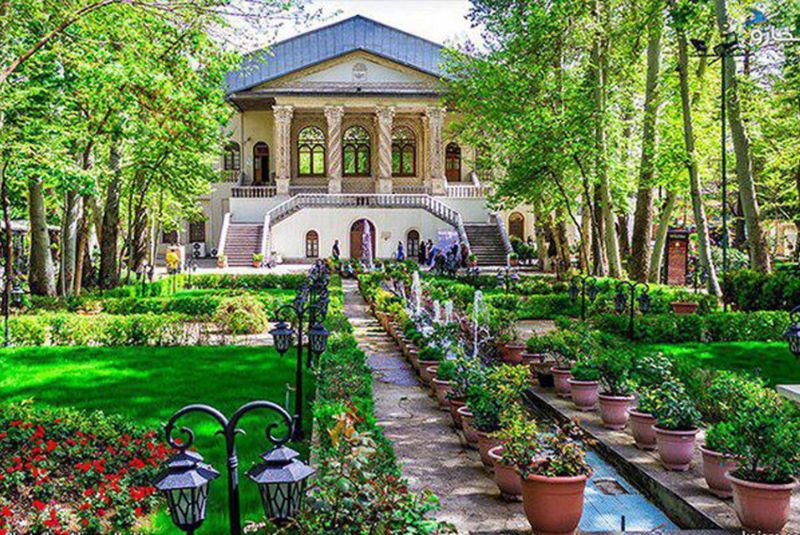
The Cinema Museum of Iran, also known as the Ferdows Museum, located in the pleasant climate of Ferdows Garden, is one of Tehran's most delightful tourist attractions.
The museum showcases the rich history of Iranian cinema, where you can lose yourself in the magic of Iranian films.
Over 130 years ago, Ferdows Garden was established near Tajrish during the Qajar Dynasty. This stunning garden harbors a two-story mansion that has served diverse functions, from a high school to an art and cultural center.
In 1937, Dr. Afshar Yazdi began a remarkable journey, gradually acquiring the surrounding properties. By 1957, he transformed this space into a vibrant cultural center. In 2002, it was inaugurated as the Cinema Museum of Iran. Ever since, the Cinema Museum of Iran has continued to thrive in its current format, attracting a diverse range of visitors, from avid cinema enthusiasts to dedicated researchers, who come to appreciate and explore the countless treasures it holds.
| Discover: Best Museums in Tehran
History of Cinema Museum of Iran

The Cinema Museum of Iran is housed within the historical complex of Ferdows Garden (Bagh e Ferdows), which is located in the Tajrish district of Shemiran, northern Tehran, Iran.
The origins of this complex can be traced back to the Qajar dynasty, specifically the reign of Mohammad Shah from 1808 to 1848. During his rule, a mansion named Mohammadie was constructed in Tajrish. However, the structure remained incomplete following the death of Mohammad Shah in 1848.
It was later, during the reign of Naser ed Din Shah from 1848 to 1896, that Hossein Ali Khan (Moayyer ol Mamalek), a close courtier of Mohammad Shah, took charge of completing the mansion. He transformed it into a two-floor Qajar-style mansion and renamed it Ferdows. Ownership of the complex was then transferred to Dust-Ali Khan (Nezam od Dowle), the son of Hossein Ali Khan, who refurbished and further developed the area.
Dust-Mohammad Khan, the son of Dust-Ali Khan and the son-in-law of Naser ed Din Shah added a new mansion to the south of the enclosure. This mansion, known as Rashk e Behesht, was constructed with the expertise of architects from Isfahan and Yazd, and it became a prominent feature of the complex. Over time, the complex changed hands, and the older mansion was eventually destroyed.

In subsequent years, Mohammad-Vali Khan Tonekaboni, the leader of the Constitutionalist Revolutionary Forces from the northern regions of Gilan and Mazandaran, acquired the remaining structure. He made further improvements to the complex, including the addition of pools, fountains, and the regeneration of the aqueduct to ensure a fresh water supply for the garden. The current gate of the garden also dates back to this period.
Throughout its history, the complex had various uses. In 1937, it housed the primary and secondary schools of Shapur under the Ministry of Education. Following the 1979 Revolution, the garden served as a training center for filmmaking until 2002, when it was transformed into the Cinema Museum of Iran.
Today, the Cinema Museum of Iran's primary objective is to preserve and exhibit cinematic works, documents, photographs, contracts, correspondence, instruments, and publications related to Iranian cinema.
| Discover: Tehran's Most Famous Palaces
Architecture of Cinema Museum of Iran
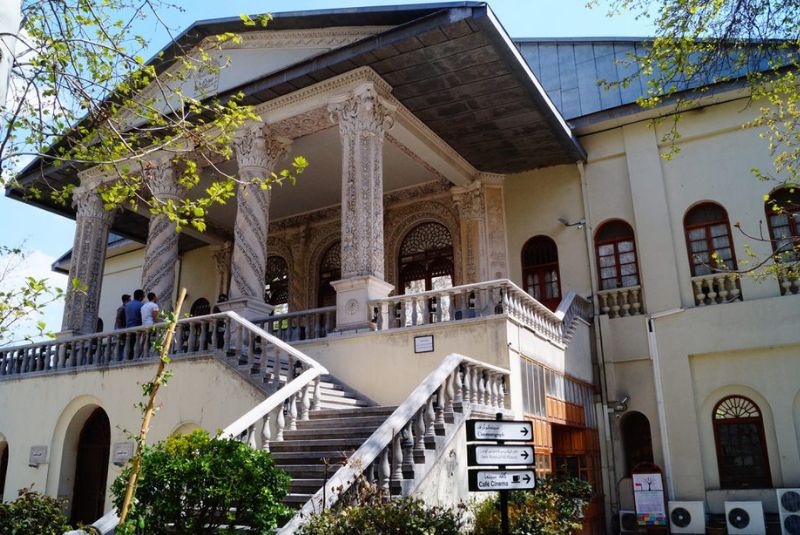
Ferdows Garden spans an impressive area of 20,000 square meters and features a mansion covering 1,000 square meters. Inside the mansion, every room and hall showcases stunning plasterwork beneath the roof's edge, adorned with intricate floral and foliage designs.
Ferdows Garden has undergone significant changes, witnessing the destruction of various elements such as pools, aqueducts, buildings, and other mansions. Even after its transformation into a cinema museum, minor modifications have taken place, including adding interior and exterior lighting, plaster covering on the interior walls, incorporating light walls for interior divisions, and introducing new flooring.
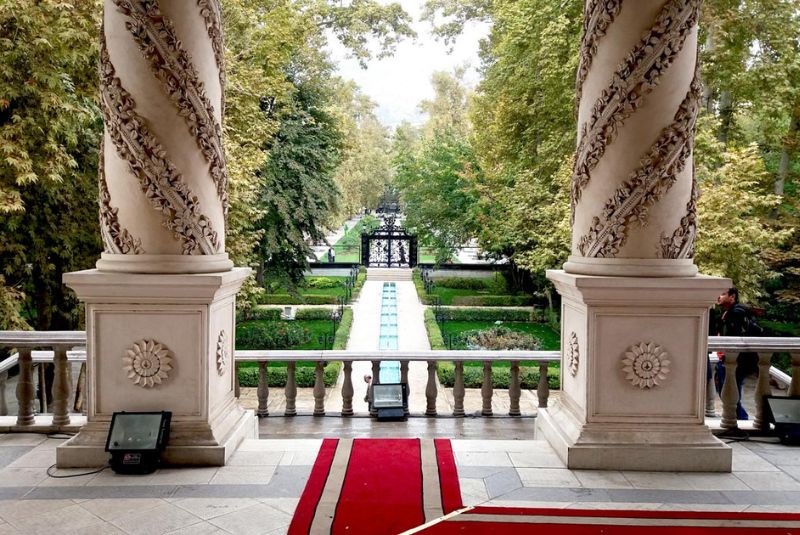
The Cinema Museum of Iran, located within Ferdows Garden, houses a remarkable collection that chronicles the history of Iranian cinema. It houses an extensive collection, including 40,000 photographs of Iranian cinema and artists, over 5,000 volumes of cinema magazines, 3,000 historical documents, correspondence, and contracts, approximately 350 sets of tools and instruments, 2,500 film announcements, and 4,000 screenplays.
Additionally, the complex features two cinema halls, providing visitors with the opportunity to enjoy film screenings within the museum's premises.
The museum also showcases domestic and foreign awards, announcements, and various clothing, decor, and makeup examples. Visitors can enjoy the museum's treasures and take a break at one of its two cafes, providing a relaxing and immersive experience.
| Suggestion: Royal Car Museum in Tehran with Vintage Car Collections
Various Sections of the Cinema Museum
The Cinema Museum of Iran offers visitors a diverse range of sections, each providing unique insights into the rich history and development of Iranian cinema. Let's explore these sections:
1. The Blue Hall

This section serves as an introduction, showcasing the history of the Ferdows Garden and the Cinema Museum itself. Visitors can explore the emergence of cinema in the world and Iran, learn about the pioneers of Iranian cinema, and view the first filmmaking equipment used in Iran.
2. The Middle Hall (Contemporaries)
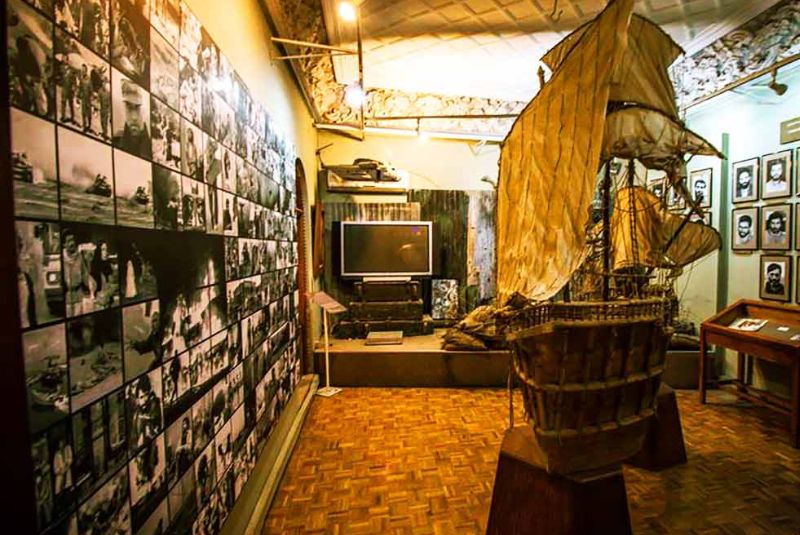
This hall focuses on the behind-the-scenes aspects of Iranian films. It displays portraits of directors, cinematographers, makeup artists, stage and costume designers, and various Iranian cinema accessories, providing a glimpse into the artistic and technical aspects of filmmaking.
| Read more: Tehran National Garden Gate | Sardar-e Bagh-e Melli
3. The International Hall
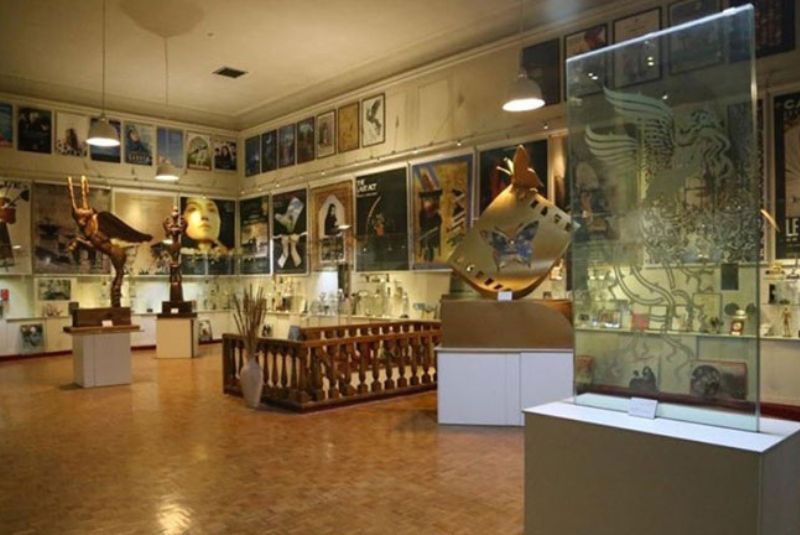
This section introduces visitors to the international recognition and awards received by Iranian cinema. It highlights the achievements of Iranian films at international film festivals and showcases the prestigious awards bestowed upon Iranian filmmakers.
4. The Sacred Defense Exhibition

This exhibition delves into films made during the Sacred Defense era, shedding light on the directors and key contributors involved in producing these films. It offers insights into the cinematic representation of this significant period in Iranian history.
5. The Exhibition Hall
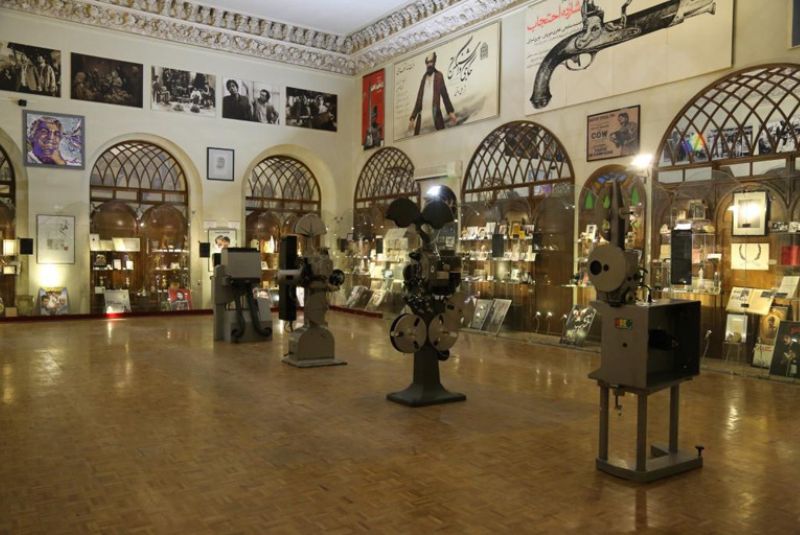
This hall presents the first cinema theaters, the pioneering cinema owners, and the best-selling films of Iranian cinema. It provides a historical overview of the early days of cinema in Iran and its impact on the cultural landscape.
| Discover: Valiasr Street - A Traveler's Guide
6. The Child Exhibition Hall
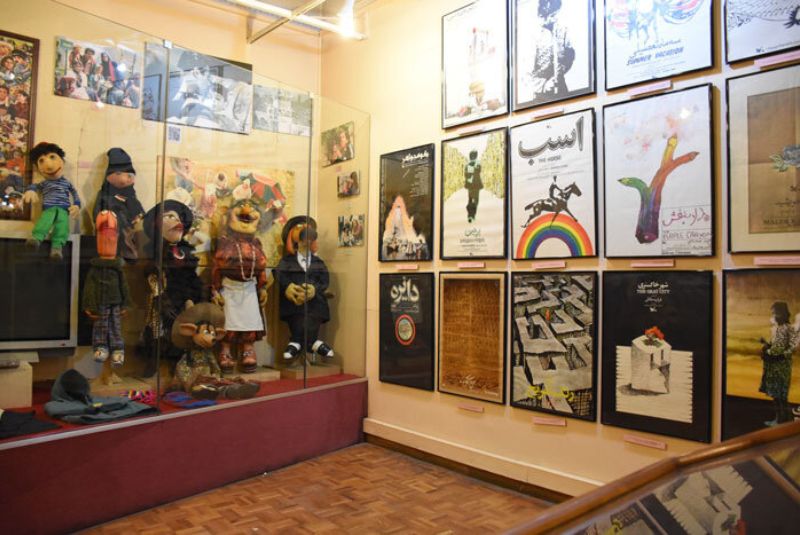
This section celebrates the actors, filmmakers, and artists who contributed to Iranian cinema for children and adolescents. It showcases their work and their lasting influence on young audiences.
7. Ali Hatami's Exhibition Hall
Dedicated to Ali Hatami, this hall displays mementos, sculptures of Ezzatollah Entezami and Ali Hatami, and costumes used by Iranian artists in films produced before and after the Islamic Revolution. It pays tribute to the renowned filmmaker and his contributions to Iranian cinema.
8. The Exhibition Hall of Celebrities
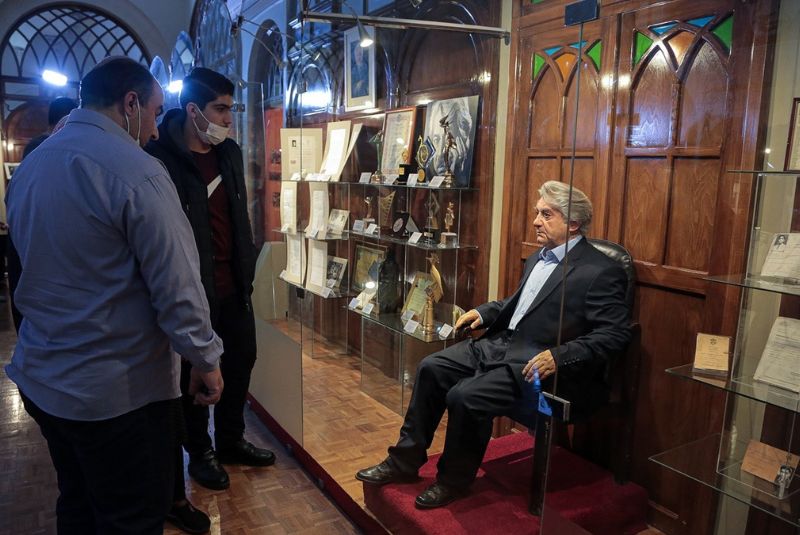
This hall features pictures of prominent figures from various fields of Iranian cinema. It honors the achievements and contributions of these influential personalities.
| Suggestion: Darband - A Natural Haven in Tehran, Iran
9. Dubbing and Audio Exhibition Hall
This section showcases old equipment and tools used for audio recording and producing record disks for movies and soundtracks, offering a glimpse into the technical aspects of sound production in Iranian cinema.
10. Farhad's House

Simulating Farhad Mehrad's house, this section displays personal belongings, books, and instruments belonging to the renowned Iranian singer, composer, and musician, providing a deeper understanding of his artistic journey.
11. The Hall of History
This hall explores the earliest human efforts in recording movements and early theater activities in China and India, the first illustrations created by Iranians to narrate Ferdowsi's Shahnameh and religious narratives. It highlights the historical context and the cultural significance of storytelling through visual media.
12. The Armenian Exhibition
This exhibition celebrates the influential role of Armenians in Iranian cinema. It showcases their contributions and impact on the development of the film industry in Iran.
| Also read about: Saad Abad Historical Complex
Things to Do in Iran Cinema Museum
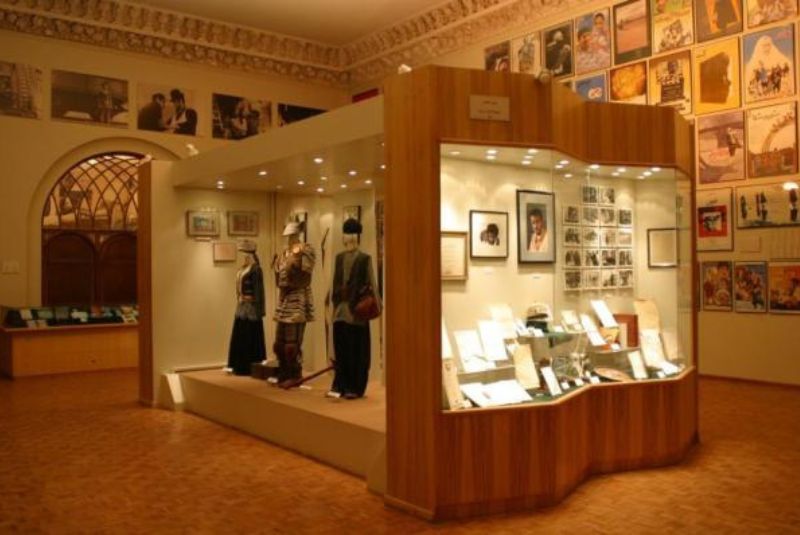
The Cinema Museum of Iran offers more than just museum exhibits. In addition to the various halls and exhibitions, visitors can enjoy two cinema halls, two cafes, a bookshop, and a handicraft shop.
Moreover, the Ferdows Garden itself is a picturesque setting for a leisurely walk throughout the year. Take a leisurely stroll among the tall trees and soothing fountains, accompanied by the delightful melodies of singing birds.
Entrance Fees and Visiting Hours

The Cinema Museum of Iran welcomes visitors from Sundays to Fridays between 10 a.m. and 6 p.m. On Saturdays and holidays, the museum remains closed.
The cultural booths and cafes in Ferdows Garden operate daily from 9 a.m. to 12 a.m., providing a variety of offerings for visitors to enjoy.
As for the ticket prices, on Thursdays and Fridays, the cost is 15,000 tomans. On Tuesdays, the price is 9,000 tomans, and on other days, it is 12,000 tomans.
Best Time to Visit the Cinema Museum of Iran
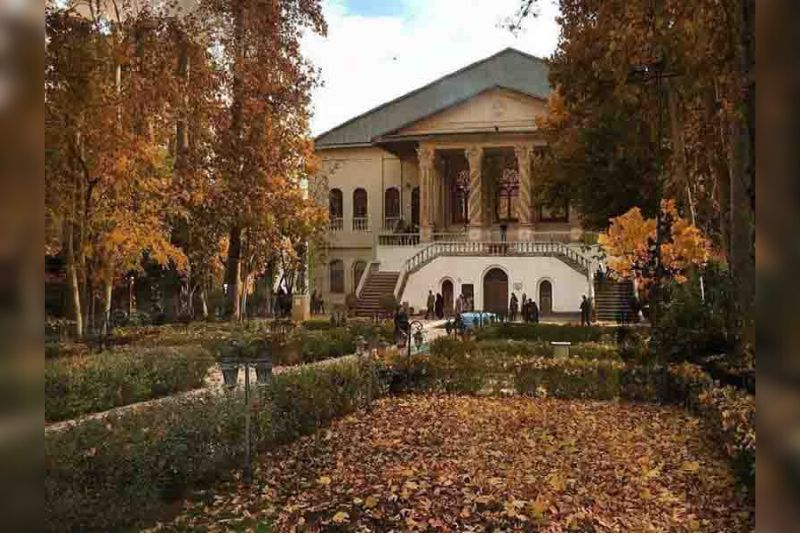
The Cinema Museum of Iran can be visited throughout the year, as each season offers its own charm. However, the best time to experience the museum's ambiance is during spring, particularly in May. This is when the surrounding Ferdows Garden flourishes with vibrant colors and pleasant weather.
Additionally, during this season, the museum building itself is well-maintained, showcasing its cleanliness and enhanced aesthetics.
Location of Iran Cinema Museum
The Cinema Museum of Iran is situated within the serene Ferdows Garden, a Persian garden located near Tajrish Square, which is at the northern end of Vali-e Asr Street in Tehran.
How to Get to the Cinema Museum of Iran
There are several convenient ways to reach the Tehran Cinema Museum:
By Car
There are numerous taxi terminals in the city, particularly in Tajrish Square, making it easy to access the museum by car. However, finding parking near the museum can be challenging, so it's recommended to park in one of the nearby alleys or consider the public parking lot in Tajrish Square.
By Bus
You can take the 7th line of Tehran BRT (Bus Rapid Transit) and get off at the Bagh Ferdows Station. This bus line provides a direct route to the museum.
By Metro
The nearest metro station to the Cinema Museum is Tajrish Station, which is part of the first line (red line) of the Tehran Metro system. From Tajrish Station, you can walk approximately 20 minutes south on Valiasr Street to reach the Ferdows Garden mansion. Alternatively, you can take a taxi or BRT from Quds Square after exiting the metro station.
On Foot
If you enjoy sightseeing on foot, you can take a pleasant 20-minute walk from Tajrish Square to the museum. Simply head south on Valiasr Street until you reach the Ferdows Garden mansion.
Attractions Nearby the Cinema Museum of Iran
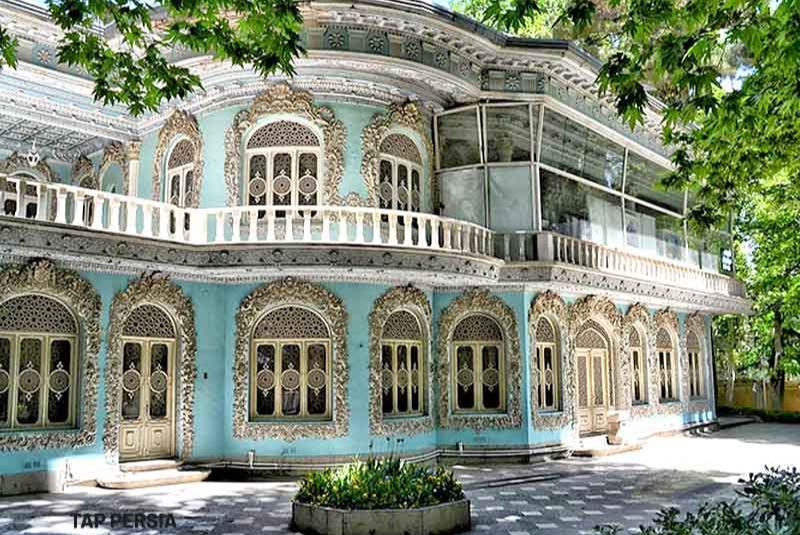
There are so many attractions near the Iran Cinema Museum that can complement your day trip. For history enthusiasts, a visit to the Archaeological Institute of Tehran University and the Time Museum can provide fascinating insights.
A visit to Tajrish Bazaar is a must for shopping enthusiasts, where you can find a variety of goods. Additionally, you can make a pilgrimage to Imam Zadeh Saleh, a revered religious site.
Bottom Line
The Cinema Museum of Iran, also known as the Ferdows Museum, is a captivating destination within the serene Ferdows Garden. This museum offers a mesmerizing glimpse into the rich history of Iranian cinema, allowing visitors to immerse themselves in the magic of Iranian films.
With a fascinating backstory dating back to the Qajar Dynasty, the Ferdows Garden provides a picturesque setting for this cultural gem. It served as a mansion, high school, and cultural center. Today, it serves as a cinema museum that continues to provide unforgettable memories to curious travelers.
Share your story!
Comment below and let us know about your Experience.
Your story inspires others!


Comment
Leave a Comment